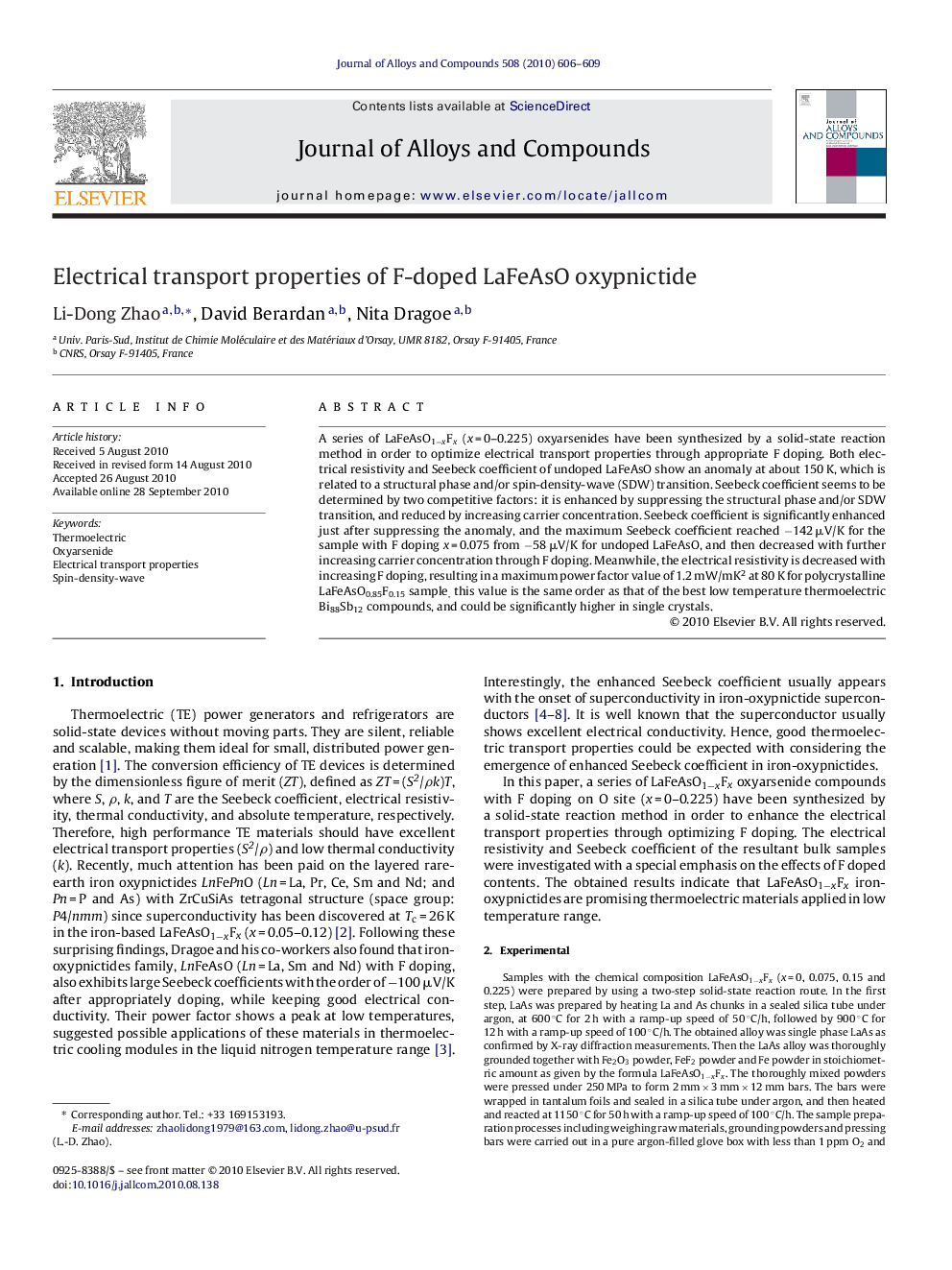| Article ID | Journal | Published Year | Pages | File Type |
|---|---|---|---|---|
| 1619295 | Journal of Alloys and Compounds | 2010 | 4 Pages |
A series of LaFeAsO1−xFx (x = 0–0.225) oxyarsenides have been synthesized by a solid-state reaction method in order to optimize electrical transport properties through appropriate F doping. Both electrical resistivity and Seebeck coefficient of undoped LaFeAsO show an anomaly at about 150 K, which is related to a structural phase and/or spin-density-wave (SDW) transition. Seebeck coefficient seems to be determined by two competitive factors: it is enhanced by suppressing the structural phase and/or SDW transition, and reduced by increasing carrier concentration. Seebeck coefficient is significantly enhanced just after suppressing the anomaly, and the maximum Seebeck coefficient reached −142 μV/K for the sample with F doping x = 0.075 from −58 μV/K for undoped LaFeAsO, and then decreased with further increasing carrier concentration through F doping. Meanwhile, the electrical resistivity is decreased with increasing F doping, resulting in a maximum power factor value of 1.2 mW/mK2 at 80 K for polycrystalline LaFeAsO0.85F0.15 sample, this value is the same order as that of the best low temperature thermoelectric Bi88Sb12 compounds, and could be significantly higher in single crystals.
Research highlightsMuch attention has been paid on the layered rare-earth iron oxypnictides LnFePnO (Ln = La, Pr, Ce, Sm; and Pn = P and As) since superconductivity has been discovered at Tc = 26 K in LaFeAsO0.89F0.11[2]. After that, Dragoe and his co-workers found that iron-oxypnictides exhibit large Seebeck coefficients, and suggested that iron-oxypnictides are promising low temperature thermoelectric materials [3]. In this paper, a series of LaFeAsO1−xFx (x = 0–0.225) oxyarsenides have been synthesized by a solid-state reaction method in order to optimize electrical transport properties through appropriate F doping. Results show that both electrical resistivity and Seebeck coefficient of undoped LaFeAsO show an anomaly at about 150 K, which is related to a structural phase and/or spin-density-wave (SDW) transition. The enhancement of Seebeck coefficient and electrical properties result in power factor show the maximum value of 1.2 mW/mK2 at 80 K for LaFeAsO0.85F0.15 sample, this value is the same order to that of the best low temperature thermoelectric Bi88Sb12 compounds. The present results indicate that LaFeAsO1−xFx iron-oxypnictides are promising for thermoelectric cooling applications in the liquid nitrogen temperature range.
